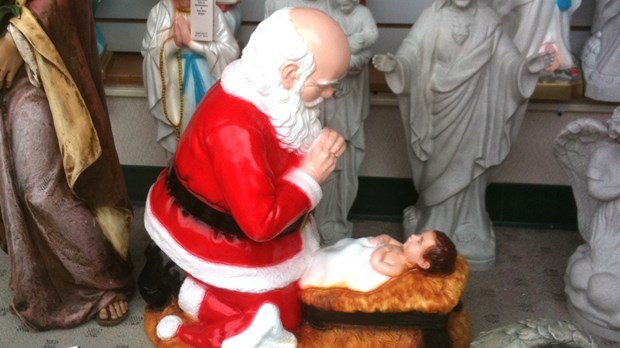
“For this cause I was
born, and for this cause I have come into the world, that I should bear witness
to the truth. Everyone who is of the truth hears My voice.” (John 17:38)
“I have no greater joy
than to hear that my children walk in truth.” (3 John 4)
This year my son turned
four and he’s really starting to get excited about Christmas. He’s also
beginning to understand many of the traditions, myths and stories. My wife and
I decided early on that we would tell our kids the truth about Santa Claus,
presents, reindeer and how all those things were “fun to pretend,” but that
they were not the real reason for the season. We have stressed that Christmas
is about worshipping Jesus and celebrating His birth. We did this because we
didn’t want our kids coming back to us when they got older saying, “Why did you
lie to us and how can we trust you about the things you taught us about Jesus?”
My explanation to my son
went like this: “Santa was a real, historical person who loved God. He was kind
and generous. His real name was Nicholas and he did give gifts to people in
need. But, he died along time ago and Christmas is not really about him, it’s about
God becoming a baby to save us. God gave us the most precious gift when He sent
Jesus to this earth.” Daniel nodded and said, “Yeah. Jesus. He died on the
cross.” Out of the mouths of babes!
Actually, the real story
about Nicholas is quite intriguing and important to church history. Nicholas
was born sometime around 280 AD in what is modern-day Turkey to a wealthy Christian
couple. When his parents died during a plague, nine-year-old Nick was left with
an incredible sum of money. When he became
an adult, Nick donated much of his resources to the feed the poor and take care
of the needy in his hometown.
Nicholas is most notably
remembered for helping the family of a nobleman in Patara who had gone
bankrupt. Ruthless creditors not only took the nobleman’s property, but also
threatened to take his three beautiful daughters as well. The father’s only
hope was to marry off his daughters before the creditors could take them,
thereby saving them from a life of slavery and prostitution. Unfortunately, he
did not have money for the girls’ dowries, which were necessary for them to
marry. Nicholas heard of this dilemma and late one night threw a bag of coins
in the family’s window to save the daughters. When Nicholas threw the money, a
few coins supposedly landed in one of the daughter’s stockings that she had set
out by the fireplace to dry. Thus, began the tradition of gifts in stockings.

Nicholas grew to be a
well-loved Christian leader and was eventually voted the Bishop of Myra, a port
city that the apostle Paul once visited (Acts 27:5-6). However, to be a
Christian during this time was dangerous business. In 303 AD, the Roman
emperor, Diocletian, issued a formal edict to destroy all Christian churches,
burn the Scriptures and imprison or kill those who preached Christ. The storm
of persecution which led to the deaths of hundreds of Christians, eventually
reached Myra. Despite threats of imprisonment Bishop Nicholas continued to
preach boldly the deity of Jesus. He was soon seized by torturers and confined
to prison for several years. Nicholas was beaten and tortured for his faith,
but remained strong.
As providence would have
it, Constantine eventually took the seat of power over the Roman Empire.
Shortly after his ascension to the throne, in 313 AD Constantine supposedly
converted to Christianity and issued the Edict of Toleration, officially giving
Christianity tolerance throughout the Empire. Constantine ordered the release
of those imprisoned for Christ, and so Nicholas was granted his freedom.
Afterward, Nicholas traveled
to the Council of Nicaea, where he helped defend the deity of Jesus Christ in 325
AD. The council ended the “Arian heresy,” which demoted Jesus to a
“less-than-God” status. During the debates Nicholas became so enraged with
Arius for formulating his detestable doctrines that he slapped the heretic in
the face!
Nicholas died in 343 AD and
was canonized into sainthood by the Catholic Church.
Now I ask you, which
version of the story is more exciting—the preacher who was persecuted for his
faith or the guy who comes down the chimney bearing gifts? Why don’t Christians
tell their kids about the real Nicholas—a man who preached Christ, suffered for
his faith, and smacked down heretics—rather than the fairy tale version
invented by marketing gurus?
Use the mall Santa as an opportunity
to tell children about the godly qualities of the real Nicholas, who dedicated
his life to serving others and was an example of Christian character.
Sources
1.
William J.
Federer, There Really Is a Santa Claus
(New York: Amerisearch, 2003).
2.
Max Lucado, And the Angels Were Silent (Nashville,
TN: Thomas Nelson, 1987), 81.
No comments:
Post a Comment